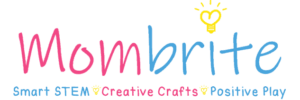This fizzy egg dyeing science experiment is a fun Easter activity for your kids. All you need is baking soda and vinegar to make the chemical reaction happen!
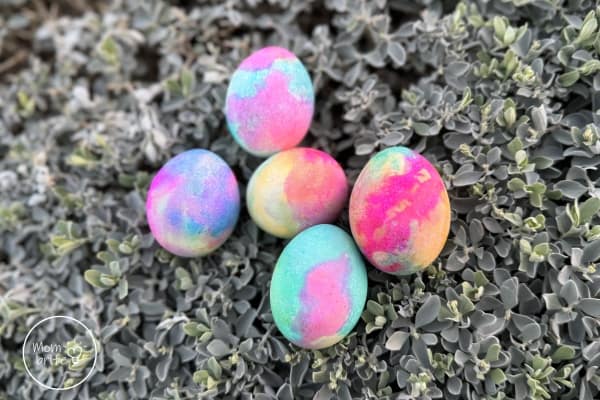
Dyeing Easter eggs is part of our tradition for celebrating the holiday the kids look forward to every year. But as the kids get older, they are looking for more unique ways to dye the eggs than by using the store-bought kit and dunking the eggs in colored water.
This Easter, we are taking egg dyeing to a new level with just two simple kitchen staples (plus food coloring): baking soda and vinegar. When you mix the two ingredients together, you unleash a fizzy reaction that is not only science-tastic but also perfect for creating beautifully vibrant Easter egg designs.
Your kids might remember the science fair volcanoes back in the day, and this fizzy egg science experiment uses the same concepts. Hence, my kids like calling this method of egg dyeing creating “volcano eggs”!
How to Dye Easter Eggs with Baking Soda and Vinegar
Materials:
- White eggs
- Food coloring
- Baking soda
- White vinegar
- Small containers (we used plastic cups, but you can also use a muffin tin)
- Paintbrushes, popsicle sticks, or plastic spoons
- Optional: droppers
- Disposable gloves
Fizzy Eggs Instructions:
1. Prepare the Eggs.
Make hard-boiled eggs using your preferred method. Some people like using the stovetop, while others opt for the oven or air fryer. Personally, I like to make hard-boiled eggs in the Instant Pot because you can set it and forget.
2. Create Dye Paste
Mix 2 tablespoons of baking soda, 3-10 drops of food coloring, and 1 tablespoon of water in a small container. You may need to add a little more water if the paste looks clumpy or too thick.
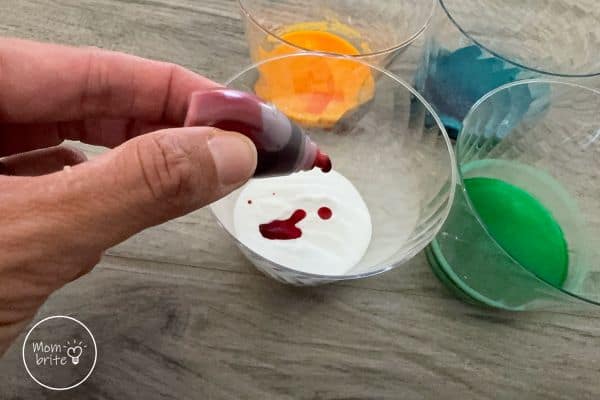
I know 3-10 drops of food coloring sounds like a wide range, but I can’t give you an exact number because the number of drops you use will depend on your food coloring. If you are using natural food coloring, you will need to add more drops to create the same depth of color as that produced by artificial dyes.
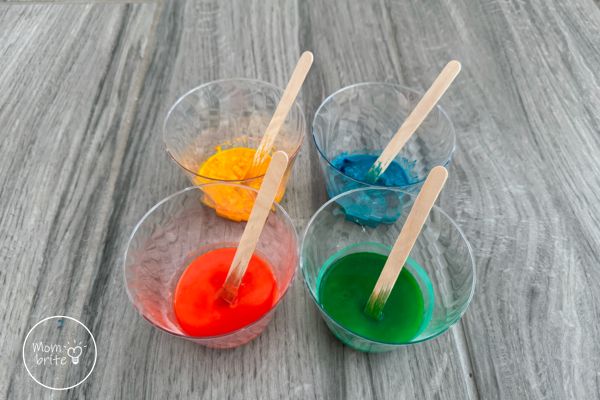
3. Apply the Colored Dye Pastes
Using small paintbrushes, foam brushes, or popsicle sticks, apply the colored dye pastes to the egg. Don’t worry if the colored pastes touch or overlap each other since they will mix together anyway when we drop vinegar on them.
There really isn’t need to be any rhyme or reason to how to paint the egg. Let your kids explore and go crazy!
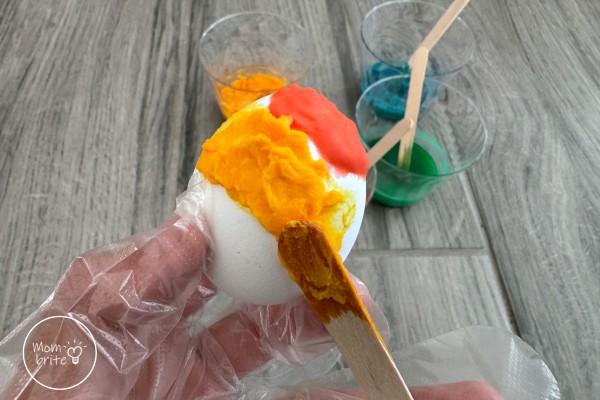
4. Add Food Coloring (Optional)
After the eggs are covered with paste, place the eggs in a small container. You can use a muffin tin for this step, but my kids would rather have their own cups instead of taking turns with the muffin tin.
Before adding the vinegar, you can add a few drops of food coloring dye onto the eggs for a more vibrant color. We experimented with adding no additional food coloring, adding just 1-2 drops, and adding quite a few drops. They all turn out great!
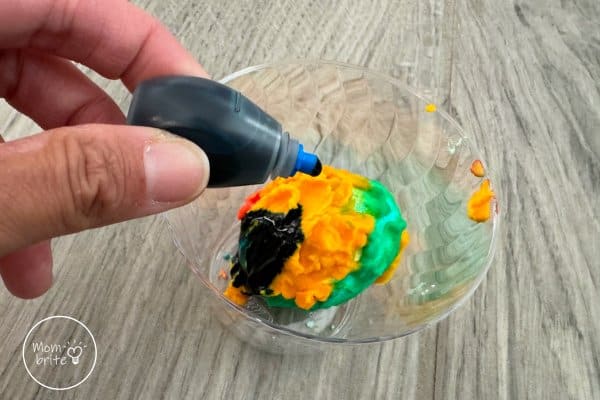
5. Add the Vinegar to Make Fizzy Eggs
Slowly add vinegar to the baking soda paste using droppers or simply a measuring spoon. The reaction between the baking soda and vinegar creates lots of bubbles and fizz, which will help coat the egg in all sorts of fun patterns.
Make sure you take out the egg fairly quickly after the fizzing stops. If the dyes mix too much, you’ll end up with brown on your eggs.
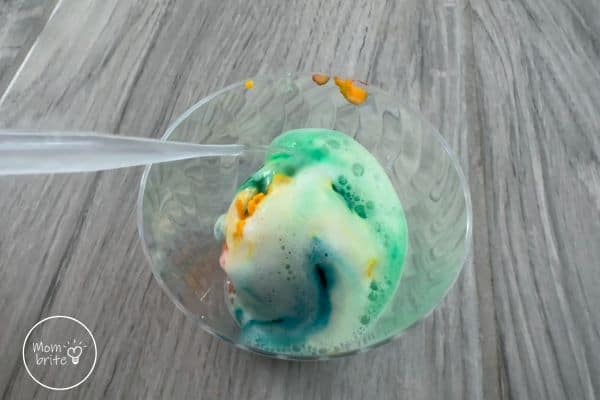
How fun was dyeing Easter eggs with baking soda and vinegar? Depending on how you applied the colored pastes, your eggs may have a swirled, marble, or tie-dyed pattern.
Play around with the color combinations, number of drops of food coloring, and amount of vinegar to form different-looking Easter eggs. They are all so gorgeous!
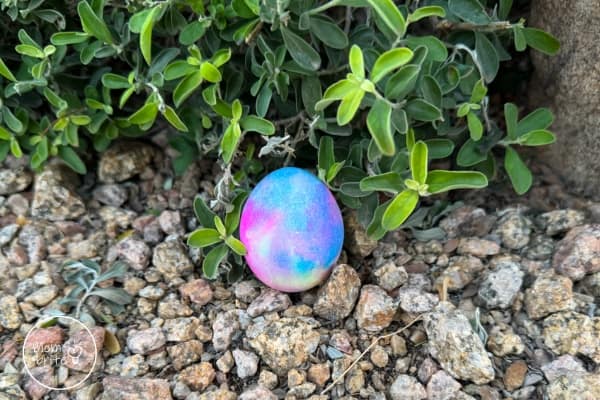
Hide your fizzy eggs around the yard as part of the Easter egg hunt. Your kids will love finding the eggs and putting them in their Easter baskets!
Science Behind the Fizzy Egg Experiment
Baking soda and vinegar react with each other. That means they get excited when they meet each other, just like when you see your friends after a long time, and you’re super happy!
The chemical reaction that happens when baking soda and vinegar are mixed together creates lots of bubbles. These bubbles are actually a gas called carbon dioxide. It’s the same stuff that makes fizzy drinks like soda bubbly!
When baking soda and vinegar are mixed, they make a fizzy explosion! This is not only fun to watch but also teaches us how different things can mix together and make something new.
YOU MAY LIKE:
